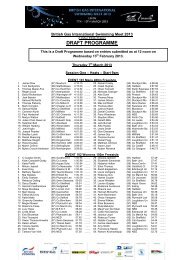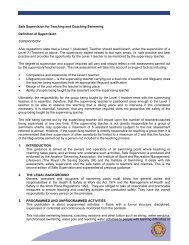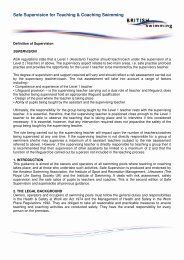Energy efficiency in swimming pools - Swimming.Org
Energy efficiency in swimming pools - Swimming.Org
Energy efficiency in swimming pools - Swimming.Org
You also want an ePaper? Increase the reach of your titles
YUMPU automatically turns print PDFs into web optimized ePapers that Google loves.
Sensible and latent heat recovery<br />
■ The warm, moist air extracted from a pool hall<br />
conta<strong>in</strong>s both sensible and latent heat energy.<br />
If a dehumidification system is used,<br />
much of the latent energy can be released as<br />
the vapour condenses and the temperature<br />
falls. Dehumidification devices can be used to<br />
control the humidity of pool hall air by<br />
remov<strong>in</strong>g water vapour without requir<strong>in</strong>g<br />
excessive amounts of fresh air. This saves<br />
energy by reduc<strong>in</strong>g the amount of cold air to<br />
be heated, and recover<strong>in</strong>g latent heat.<br />
However, care should be taken to ma<strong>in</strong>ta<strong>in</strong><br />
sufficient fresh air supply; it is critical to<br />
satisfy both environmental and comfort<br />
conditions.<br />
■ Where heat pumps are used to recover<br />
exhaust heat, the evaporator removes sensible<br />
and latent heat from the extract air. This heat<br />
is then imparted at the condenser to the<br />
delivery airstream, which is a mixture of cold<br />
saturated air and outside air.<br />
ENERGY EFFICIENCY IN SWIMMING POOLS<br />
HEAT RECOVERY<br />
■ A gas-fired desiccant wheel, conta<strong>in</strong><strong>in</strong>g a<br />
chemically treated honeycomb matrix, works<br />
<strong>in</strong> a similar way to the thermal wheel by<br />
recover<strong>in</strong>g sensible and latent heat from the<br />
pool air.<br />
OPERATIONAL ISSUES<br />
The technologies described <strong>in</strong> this section need to<br />
be operated and ma<strong>in</strong>ta<strong>in</strong>ed effectively if they are<br />
to realise their full potential for heat recovery.<br />
Simple cross-flow plate heat exchangers require<br />
m<strong>in</strong>imal ma<strong>in</strong>tenance due to the absence of<br />
mov<strong>in</strong>g parts, but even these should be checked<br />
regularly for any blockages of the fluid pathways<br />
and contam<strong>in</strong>ation of the heat exchange surfaces.<br />
12<br />
FURTHER READING<br />
<strong>Energy</strong> Consumption<br />
Guide 51; Good Practice<br />
Guides 130, 137, 144, 146

















